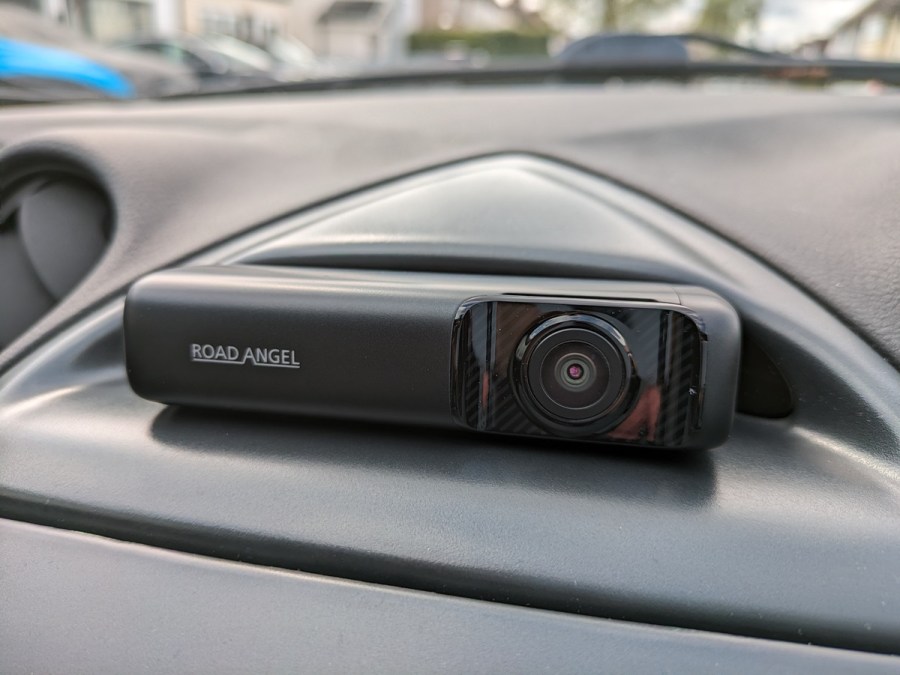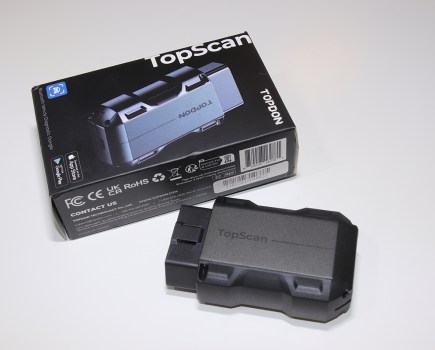There are plenty of top tier dash cams on the market today, and on paper the Road Angel Halo Ultra looks as though it could be one of them. To find out what it’s like in practice, I installed it into my own car and evaluated how it performed in all sorts of conditions, from installation to on-the-road use.
RRP: £199.99, buy here. Not available in the US.
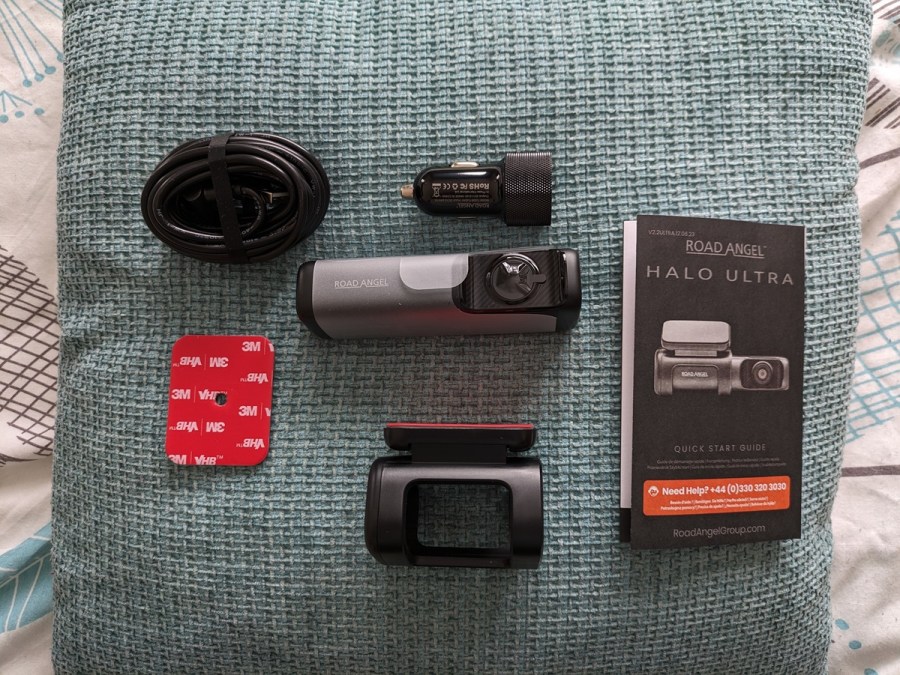
What’s in the box?
The Road Angel Halo Ultra kit is delightfully simple. In the box, you’ll find the camera, an adhesive pad, a power lead & socket, and a mounting clamp. A shortform paper setup guide is thrown in too. And that’s it. Simple. You can also add a hardwiring kit as an optional extra.
Specs:
- Resolution: 4K 2160p @ 30fps
- Field of View: 140 degrees
- Extra Features: parking mode-ready, GPS, in-built memory
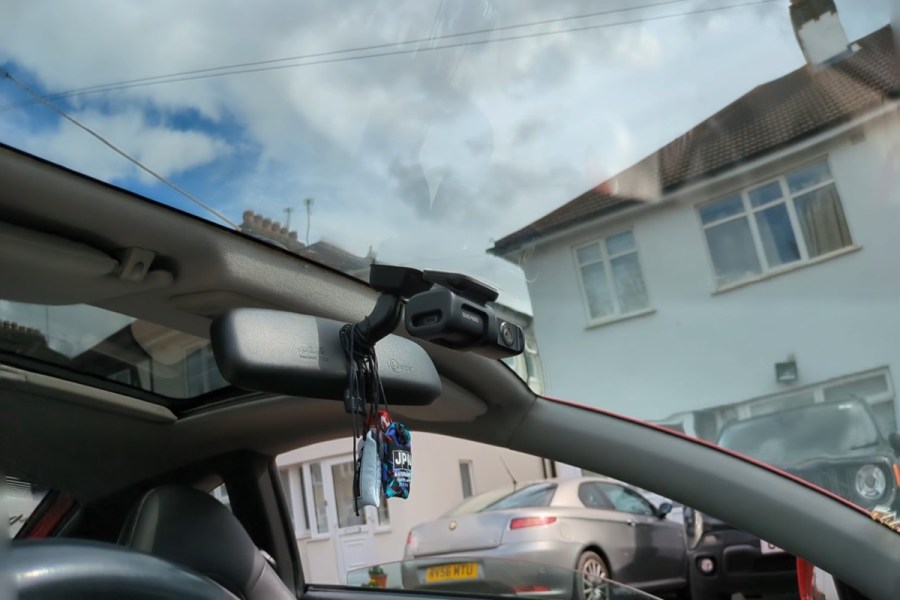
Installation
Installing the Road Angel Halo Ultra into your car is relatively straightforward, but it isn’t the best design I’ve come across (that would be the magnet-based system that Garmin uses). Still, it doesn’t take too much effort to stick the camera mount to the windshield via the supplied adhesive pads. The only trouble is that, due to how strong those adhesive pads are, it can be a real pain to reposition them if you’ve got the angle slightly wrong.
As a general rule, you want to place the dash cam high and central on the windscreen so that it can capture the best view of the road ahead, and so that it won’t interfere with your line of sight from the driver’s seat.
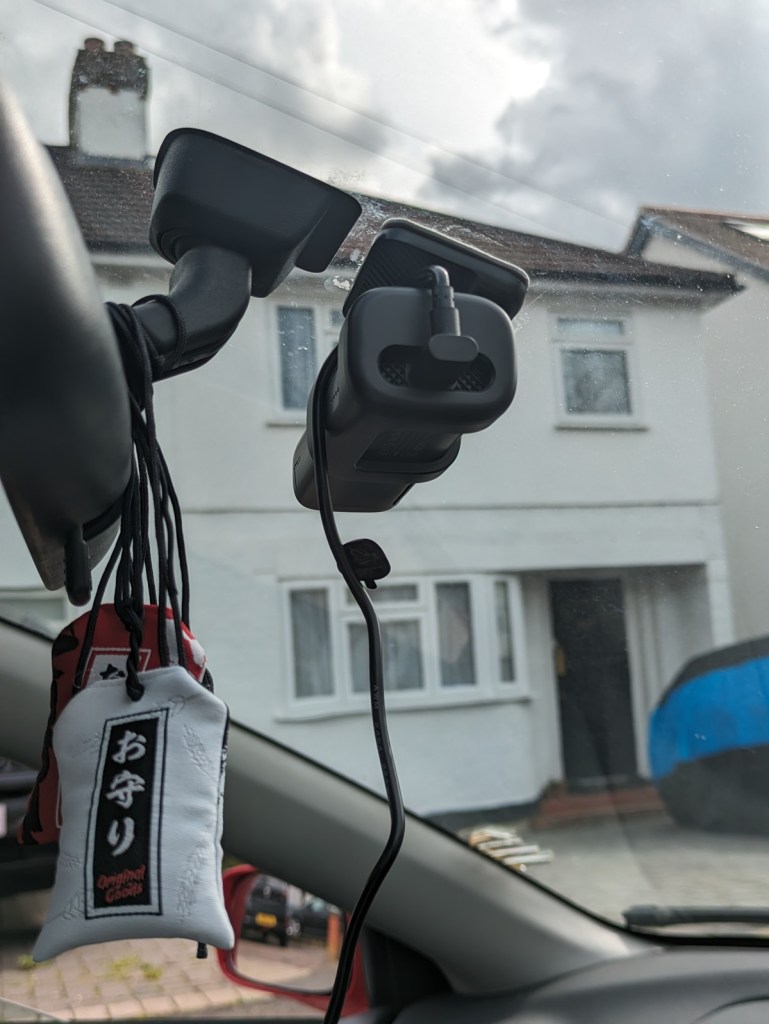
Power
The next stage is to secure a power source for your dash cam. To unlock the full functionality of the Road Angel Halo Ultra, you should ideally hardwire it into your car. By doing this, the camera will receive a constant power stream, allowing it to remain active even when the car is parked with the ignition turned off. That way, you can make use of parking mode and always have eyes on your car’s surroundings even when you’re away from your vehicle. I’ll speak more about the app-based functionality that this camera has later on.
However, as this would be a short-term installation into my own personal car, I opted to review the camera by powering it through the 12V power socket instead. This is a much less invasive (and significantly easier) way of powering the camera, but again, does mean you won’t have access to parking mode.
Connecting to the app
With everything in place, the next thing you need to do is download the Road Angel app and use it to sync your camera to your smartphone. This is a straightforward process as the camera comes with built-in 5GHz Wi-Fi, so all you need to do is connect your phone to the camera’s WiFi signal.
The app opens up all sorts of functionality. For a start, it acts as the core hub where your dash cam’s videos (or still images) will be stored, and allows you to edit them on the fly and download them to your phone. You can also livestream the camera’s footage on the app, so if your device was hardwired you’d be able to check in on your car whenever you like. The app would also send your phone notifications if it detected any movement or activity while you were away.
Anyway, once you’ve got the app setup all sorted, you just need to tuck away any dangling wires in the cabin and you’ll be good to go!
Functions and features
As well as being a simple camera, the Road Angel Halo Ultra offers other services too. They are as follows:
- ADAS – Advanced Driver Assistance Systems: lane departure warnings, onward collision warning, front car movement warning.
- In-built GPS.
- G-sensor to detect impacts: when an impact is detected, the camera will automatically store the footage of that moment. However, I found the default setting to be too sensitive as it would register bumps in the road as impacts. Fortunately you can change the sensitivity settings, though it might speak to the ride quality in my ’05 Celica rather than anything else…
- Parking mode (when hardwired).
Daytime performance
The Road Angel Halo Ultra makes use of the SONY IMX415 image sensor, and as such it offers crisp and clear images with accurate colour palettes. Above is a snippet from my test of the camera in the daytime, so to test how well it performs, watch the video and pause on certain frames to see how many fine details you can see. Look for things like registration plates, street sign fonts… even any identifiable features of the jaywalker that attempts to cross a busy intersection. The better clarity, the more useful the camera is in the event of a legal scenario, or simply a recreational one. GPS as standard is also very welcome, as it means you’ll have exact stats for your speed and whereabouts.
Night performance
Every camera performs worse at night, that’s just the reality of having less light to work with. However, I think the Road Angel Halo Ultra does a commendable job in the circumstances. Glare is nowhere near as harsh as I’ve seen on some other cameras, and the colours are still largely representative of reality. Where it falls down is in the clarity of the image, but again, that is to be expected. Overall, a solid performance in my opinion at both day and night. Watch the videos above to decide for yourself.
Verdict
So, does the Road Angel Halo Ultra get my vote of appreciation? Yes, it does. NAPA Racing deem it to be good enough to help them test their touring cars, and from my experience, it’s certainly good enough for day-to-day use on the street. There are admittedly some things which I’m not a fan of. For example, it’s pretty dependent on the Road Angel smartphone app, so if you prefer the old-school ways of memory cards and USB cables, this might not be the right dash cam for you. Similarly, there’s no support for a rear camera, so it can’t offer all-round coverage.
However, what it can do, it does well. I was impressed by the quality of its images, and although its extra functions and features aren’t as expansive as some other dash cams on the market, they all worked quite well when I encountered them. Plus, the ability to provide a parking mode is an absolute must in 2024.
Overall then, if you don’t mind resorting mainly to a smartphone app to use your dash cam, this is a great option if you just need a cost-effective way of recording 4K footage through your car’s windscreen.

